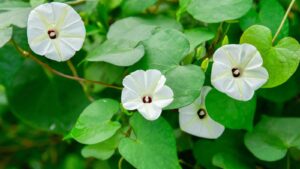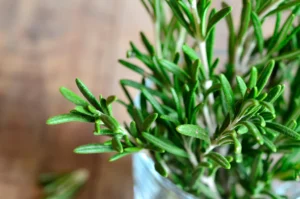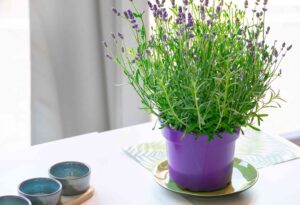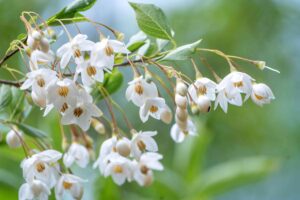How and When to Prune Spirea to Boost Blooms: Complete Guide
Are you looking to transform your spirea shrubs from ordinary to extraordinary? The secret lies in proper pruning techniques. Spirea (Spiraea spp.) is one of the most versatile flowering shrubs in American gardens, admired for its cascading branches and profuse blooms. Whether you have the spring-flowering varieties with their classic bridal wreath appearance or summer-blooming types with their vibrant colored foliage, knowing how to prune correctly can dramatically increase your floral display.
Understanding Spirea Growth Habits
Before you pick up those pruning shears, it’s important to understand how spirea grows. These deciduous shrubs fall into two main categories, each with specific pruning requirements:
Spring-Flowering Spirea
Spring bloomers like Vanhoutte (Spiraea x vanhouttei) and Bridal Wreath (Spiraea prunifolia) produce flowers on old wood—stems that grew during the previous season. These varieties typically display white flowers in a dramatic arching form that gives them their “bridal wreath” nickname. Their blooming period usually occurs from late March through May, depending on your climate zone.
Summer-Flowering Spirea
Summer-flowering varieties such as Japanese spirea (Spiraea japonica), Bumald spirea (Spiraea x bumalda), and their many cultivars like ‘Goldflame’ and ‘Anthony Waterer’ bloom on new wood—the current season’s growth. These typically feature pink, red, or purple flower clusters and often have colorful foliage as well. They bloom from late May through summer.
Best Times to Prune Spirea
Timing is everything when it comes to pruning spirea. Prune at the wrong time, and you might accidentally remove the very branches that would have produced flowers.

Spring-Blooming Spirea Pruning Schedule
For spring bloomers, follow this timeline:
- Primary pruning time: Immediately after flowering ends (usually May to early June)
- Light shaping: Winter dormancy (December-February)
- Rejuvenation pruning: Late winter before new growth begins (February-March)
Summer-Blooming Spirea Pruning Schedule
For summer bloomers, adhere to this schedule:
- Hard pruning: Late winter/early spring before new growth starts (February-March)
- Deadheading: Throughout summer as blooms fade
- Light shaping: Late fall after leaf drop (November-December)
Essential Pruning Techniques for Maximum Blooms
The way you prune directly affects how abundantly your spirea will flower. Let’s explore the most effective techniques.
Maintenance Pruning for Spring-Flowering Spirea
- Wait until flowers fade: Never prune spring varieties before or during blooming.
- Remove spent flowers: Cut just below the faded flower clusters.
- Thin selectively: Remove up to one-third of the oldest stems at ground level.
- Shape gently: Maintain the natural arching form; avoid shearing.
Maintenance Pruning for Summer-Flowering Spirea
- Annual hard pruning: Cut all stems down to 4-6 inches from the ground in late winter.
- Deadheading: Remove spent flower clusters promptly to encourage reblooming.
- Mid-season trim: If plants become leggy, trim back by one-third in mid-summer.
- Remove weak growth: Thin out overcrowded or crossing branches.
Rejuvenation Pruning: When and How
When spirea becomes overgrown, produces fewer blooms, or develops too many woody stems, it’s time for rejuvenation pruning. This more drastic approach can breathe new life into aging shrubs.
Complete Rejuvenation
For severely overgrown spirea:
- Cut all stems to 4-6 inches from ground level.
- Apply a balanced fertilizer in early spring.
- Spring bloomers will take 1-2 years to recover their flowering potential.
- Summer bloomers often flower the same year but with slightly delayed timing.
Gradual Rejuvenation
For less dramatic renewal:
- Remove one-third of the oldest stems at ground level each year.
- Continue this process for three consecutive years.
- By the fourth year, you’ll have completely renewed the shrub while maintaining some flowering each season.
Pruning Tools and Techniques
Using the right tools and proper cutting techniques is crucial for plant health and optimal blooming.
| Tool | Best Used For | Maintenance Tips | Approximate Cost Range |
|---|---|---|---|
| Hand Pruners | Stems up to ½ inch diameter | Clean and sharpen after each use | $15-$60 |
| Loppers | Stems ½-1½ inches diameter | Wipe blades with alcohol between shrubs | $25-$80 |
| Pruning Saw | Stems over 1½ inches | Keep teeth clean and sharp | $20-$45 |
| Hedge Shears | Light shaping of summer spirea | Not recommended for spring spirea | $30-$70 |
Cutting Techniques
- Make clean cuts: Always cut at a 45-degree angle, about ¼ inch above an outward-facing bud.
- Avoid crushing: Ensure your tools are sharp enough to make clean cuts without damaging the stem.
- Sanitize tools: Clean with a 10% bleach solution or rubbing alcohol between shrubs to prevent disease spread.
Common Pruning Mistakes to Avoid
Even experienced gardeners can make mistakes when pruning spirea. Here are some pitfalls to avoid:

Mistake #1: Shearing Spring-Flowering Varieties
Shearing spring bloomers like hedges removes the graceful arching stems that give them their characteristic form. Instead, thin out individual branches to maintain the natural shape.
Mistake #2: Pruning at the Wrong Time
Pruning spring-flowering spirea in late fall or winter removes next spring’s flower buds. Similarly, neglecting to prune summer-flowering varieties in late winter reduces bloom potential.
Mistake #3: Timid Pruning
Many gardeners are afraid to cut back aggressively, especially with summer-flowering types. However, these varieties bloom more profusely with hard pruning.
Mistake #4: Inconsistent Pruning
Skipping annual maintenance pruning leads to overcrowded, woody shrubs with fewer blooms. Establish a regular pruning schedule for best results.
After-Pruning Care
Proper care after pruning helps spirea recover quickly and produce abundant blooms.
Watering Requirements
After heavy pruning, spirea needs consistent moisture to support new growth:
- Water deeply once a week during the growing season.
- Apply water at the base of the plant to keep foliage dry.
- Increase watering during drought periods.
Fertilizing Recommendations
Fertilize properly to encourage vigorous growth and flowering:
- Apply a balanced slow-release fertilizer (10-10-10) in early spring.
- For spring bloomers, fertilize after flowering.
- Avoid high-nitrogen fertilizers that promote foliage at the expense of flowers.
According to the USDA Natural Resources Conservation Service, spirea thrives best in moderately fertile soil with good drainage, so avoid over-fertilizing, which can lead to excessive foliage growth and fewer flowers.
Seasonal Pruning Calendar for Spirea
Winter (December-February)
- Light structural pruning of spring bloomers if needed
- Plan for major rejuvenation pruning
- Clean and sharpen tools
Early Spring (March-April)
- Hard prune summer-flowering varieties
- Complete rejuvenation pruning if necessary
- Remove winter-damaged branches
Late Spring (May-June)
- Prune spring-flowering varieties after blooms fade
- Fertilize after pruning
- Monitor for new growth
Summer (June-August)
- Deadhead summer bloomers regularly
- Light trimming to shape if needed
- Remove any diseased or damaged branches
Fall (September-November)
- Clean up fallen leaves around plants
- Light pruning of summer bloomers if needed
- No major pruning of spring bloomers
Climate Considerations for Pruning Spirea
Your local climate affects the timing of spirea pruning. While the general principles remain the same, you may need to adjust your schedule based on your USDA hardiness zone.
Northern States (Zones 3-5)
- Delay spring pruning until danger of hard frost passes.
- Complete rejuvenation pruning in late March or early April.
- Prune spring bloomers promptly after flowering to allow sufficient recovery time before fall.
Mid-Atlantic and Midwest (Zones 6-7)
- Begin pruning summer varieties in February or early March.
- Expect earlier bloom times, so adjust pruning schedules accordingly.
- Spring-flowering varieties can typically be pruned by mid-May.
Southern States (Zones 8-9)
- Start pruning summer-flowering spirea in January or February.
- Spring bloomers may flower as early as February, requiring March pruning.
- Provide extra water after pruning due to higher temperatures.
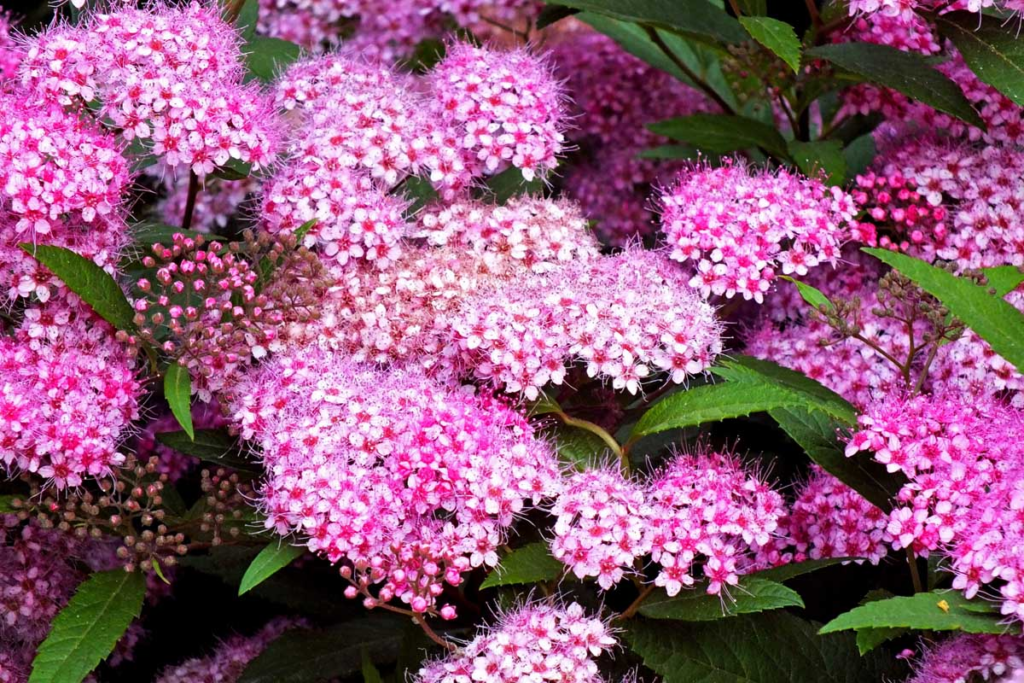
Special Considerations for Different Spirea Varieties
Different varieties may require slight modifications to general pruning guidelines.
Bridal Wreath (Spiraea prunifolia)
This classic variety needs minimal pruning to maintain its graceful form:
- Remove only the oldest stems annually.
- Prune lightly after flowering completes.
- Avoid shearing or heavy cutting back.
Japanese Spirea (Spiraea japonica)
These popular summer bloomers respond well to aggressive pruning:
- Cut back to 4-6 inches in late winter.
- Deadhead regularly for continued blooming.
- Consider a second light pruning in mid-summer.
Little Princess Spirea (Spiraea japonica ‘Little Princess’)
This dwarf variety requires more delicate treatment:
- Reduce hard pruning height to 3-4 inches.
- Shape lightly throughout the season if needed.
- Remove individual spent flower heads rather than shearing.
Goldflame Spirea (Spiraea japonica ‘Goldflame’)
Grown as much for its colorful foliage as for its flowers:
- Hard prune in early spring for the brightest new foliage.
- Remove any reversions to green foliage immediately.
- Deadhead promptly to encourage reblooming.
Conclusion: Creating a Blooming Masterpiece
With proper pruning, your spirea can become a showstopping feature in your landscape. Remember these key takeaways:
- Identify whether your spirea blooms on old or new wood to determine pruning timing.
- Use sharp, clean tools and proper cutting techniques.
- Don’t be afraid to prune summer bloomers aggressively.
- Maintain a regular pruning schedule for continuous flowering.
- Provide appropriate after-care to support recovery and bloom production.
By following these guidelines, you’ll be rewarded with cascades of beautiful blooms and healthy, vibrant shrubs for years to come. Whether you’re growing spirea as a hedge, specimen plant, or mixed border shrub, mastering these pruning techniques will help you achieve professional-looking results and maximize the ornamental potential of these versatile plants.

